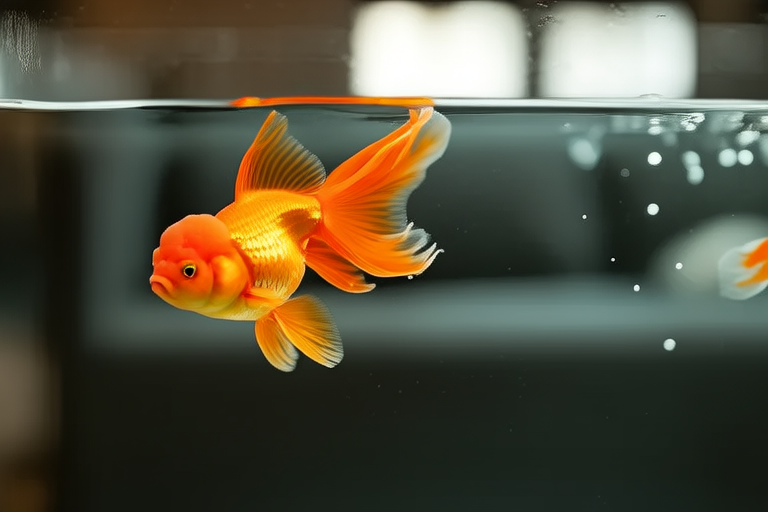How Often Should You Feed Your Goldfish? The Shocking Truth!
Welcome to the fascinating world of goldfish care! If you’re a proud owner of these delightful creatures, you might be surprised to learn that there’s more to their diet than just tossing in a few pellets every now and then. Let’s dive into some common misconceptions about goldfish feeding habits, explore their nutritional needs, and uncover the shocking truth about how often you should feed them.
Common Misconceptions About Goldfish Feeding Habits
One of the most widespread myths about goldfish is that they require constant feeding. Many people believe that goldfish will starve if they don’t eat every hour or so. In reality, goldfish are opportunistic feeders and can survive for days without food. Another misconception is that bigger portions equate to better health. Overfeeding your goldfish can lead to serious health issues, as we’ll discuss later.
The Nutritional Needs of Goldfish
Goldfish have specific dietary requirements to maintain optimal health. Their diet should include a balanced mix of proteins, fats, carbohydrates, vitamins, and minerals. High-quality commercial fish foods, such as pellets or flakes, are formulated to meet these needs. However, it’s important to supplement their diet with occasional live or frozen foods like brine shrimp, daphnia, or bloodworms. These provide essential nutrients that may be lacking in processed foods.
The Dangers of Overfeeding
Overfeeding is one of the most common mistakes made by goldfish owners. Excess food not consumed by the fish will sink to the bottom of the tank, decompose, and release harmful toxins into the water. This can lead to poor water quality, which in turn causes stress and illness in your goldfish. Common symptoms of overfeeding include bloating, constipation, and swim bladder disorders. To avoid these issues, it’s crucial to understand how much food your goldfish actually need.
Selecting Appropriate Food Types and Portion Sizes
Choosing the right type of food is just as important as determining the correct amount. Look for high-quality brands that list whole ingredients rather than artificial additives. Avoid foods with excessive fillers, as these can contribute to overfeeding. As for portion sizes, a general rule of thumb is to feed your goldfish only what they can consume within two minutes. This ensures that all the food is eaten before it has a chance to sink and degrade.
Frequency of Feeding Based on Age, Size, and Tank Conditions
The frequency of feeding your goldfish depends on several factors:
- Age: Younger goldfish, typically under a year old, have higher metabolisms and thus require more frequent feedings compared to mature adults.
- Size: Smaller goldfish tend to eat faster and more frequently than larger ones. Therefore, you may need to adjust the quantity of food according to their size.
- Tank Conditions: Water temperature and quality also play a role in determining how often you should feed your goldfish. Warmer waters accelerate metabolism, while colder temperatures slow it down. Regularly testing your tank’s pH levels and maintaining proper filtration systems are essential for ensuring a healthy environment.
In general, adult goldfish should be fed once daily, while younger fish may benefit from twice-daily feedings. Always monitor your goldfish closely during feeding times to ensure they are eating adequately but not excessively.
Monitoring Your Goldfish’s Health and Adjusting Feeding Routines Accordingly
Maintaining a close eye on your goldfish’s health is vital for making informed decisions about their diet. Signs of good health include vibrant colors, active swimming patterns, and regular appetite. Conversely, lethargy, loss of appetite, or unusual physical changes could indicate underlying problems that warrant attention.
If you notice any concerning symptoms, consider reducing the frequency or amount of food temporarily until you consult with a veterinarian specializing in aquatic animals. Additionally, regularly cleaning the tank and performing partial water changes help prevent disease outbreaks caused by poor water quality.
Remember, each goldfish is unique, so there isn’t a one-size-fits-all approach when it comes to feeding schedules. By understanding your pet’s individual needs and adapting your routine accordingly, you’ll create an environment where your goldfish thrives happily and healthily.
In conclusion, knowing how often to feed your goldfish is crucial for their well-being. Dispelling myths about constant feeding and recognizing the dangers of overindulgence sets the stage for responsible pet ownership. Selecting appropriate food types and portion sizes tailored to age, size, and tank conditions ensures that your goldfish receives the necessary nutrients without risking their health. Lastly, continuously monitoring their health allows you to make timely adjustments to keep them thriving. With this knowledge at hand, you’re well-equipped to provide the best care possible for your beloved goldfish companions.
